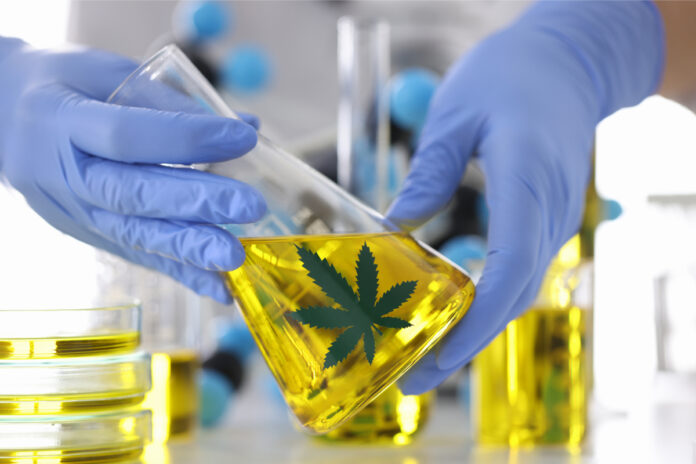Although last year was riddled with disheartening news, 2020 did deliver one definitive upside: resounding wins for cannabis. Cannabis prevailed in voter support not only for state recreational and medical legalization but also in attitudes toward general consumption, solidifying the perception people want it. In addition, governments are champing at the bit to get their hands on new sources of tax revenue.
With adult-use legalization in Arizona, New Jersey, Montana, and South Dakota bringing the U.S. recreational market to fifteen states, one in three Americans now has access to recreational cannabis. The medical market is even larger with the addition of South Dakota and Mississippi to the thirty-three previously legalized states plus the District of Columbia. Considering the imminent increase in cannabis use, ensuring consumer-safe products and accurate labeling through thorough testing is imperative. Legislators in each new state must draft their own testing regulations for producers and third-party laboratories with the primary purpose of protecting consumers—and, unfortunately, without any knowledge or much guidance for how to do so properly.
As the freshly minted cannabis-friendly states dot their bureaucratic I’s while preparing for rollouts, there’s no gold standard in testing regulations among the currently legal states upon which new states may model theirs. Federal prohibition created an environment in which states go it alone when determining regulatory and testing structures, often leading to lenience regarding what’s acceptable as safe for consumers.
This has led to some testing labs inflating potency by as much as 30 percent or allowing bud contaminated with high levels of heavy metals, pesticides, and other harmful impurities to pass through. In some cases, such situations resulted from inexperienced or ethically compromised laboratory operators pursuing a low-price strategy in order to attract business. That kind of malfeasance wouldn’t go unnoticed in other industries, but it’s all too possible in cannabis.
It’s that sort of documented data manipulation that highlights the cost of not enforcing a formally organized national strategy, making it hard for newcomers to figure out the most important regulations to include as they try to prepare for market rollout. As a result, testing regulations likely will continue to be fragmented, varying across states, which may lead to additional data manipulation and fraud.
Although Colorado was a trailblazer in full legalization, its testing regulations are questionable. The state’s rules don’t require random samples or testing every batch, thereby allowing dirty products claiming artificially high potency rates to hit the market. The process lacks oversight, and consumers are left with inconsistent, potentially unsafe products. Not only do lax testing and enforcement harm consumers—as happened with the 2019 outbreak of vaping-related illnesses caused by untested illicit products—but they also could create distrust among potential customers and investors.
States that followed Colorado sought tighter testing controls, with California and Nevada doing serviceable jobs of establishing honest, streamlined protocols. Being the strictest in terms of pesticide, pathogen, and toxicity limits per a 2018 state mandate, California’s tolerance limits could be used as a national guide. The mandate calls for parsed regulatory frameworks for flower, concentrates, edibles, oils, and tinctures, and consumers may request all certificates of analysis.
Nevada is on par with the Golden State, having done an admirable job using labs to moderate consumer safety. The Silver State requires a strict testing regimen that goes far beyond pesticide levels. Nevada’s criteria include minimum requirements for moisture content and a growth-regulator screening. In addition, Nevada regulatory agencies are active in investigating labs for possible corruption.
Going forward, navigating the gauntlet with poise and consistency in scientific practices will be crucial. Regulators must ensure testing groups, think tanks, and emerging state-level markets begin to standardize detailed measures to protect consumers while simultaneously keeping the marketplace friendly for new growers, producers, and small companies. If New Jersey, Arizona, Montana, South Dakota, and Mississippi want to guarantee aboveboard testing practices, they might be wise to carve out an unofficial framework for testing that aligns them with a shared baseline of best practices. That may fortify trust in the new markets and make oversight easier.
The alternative—non-coordinated, hodgepodge rollouts—may lead to continued fragmentation of operations, which opens the door for the kind of data manipulation and fraud that ultimately hinder the growth potential of the industry.

Aaron Riley is chief executive officer at CannaSafe, the world’s first ISO-accredited cannabis testing lab. After a college-years arrest record citing felony intent to distribute and other cannabis-related charges was expunged, he assumed ownership of CannaSafe in 2016. An outspoken advocate for social equity and consumer safety, Riley is active in regulatory issues and frequently participates in discussions with the California Bureau of Cannabis Control.













[…] come across these less prominent terpenes, like 3-Carene, Camphene, Humulene, and Linalool during cannabis testing […]
[…] to serious health problems. As the industry develops, additional regulations likely will evolve to incorporate more uniform standards with even more rigorous testing to guarantee the safety of both medical and recreational consumers. […]